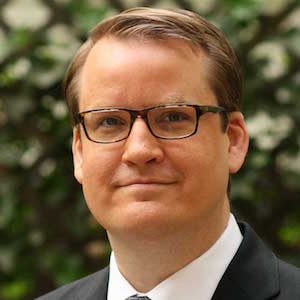We were driving from Pittsburgh back to Manhattan in a rental car when something remarkable happened: We hit traffic because of an accident.
 The remarkable thing was not hitting traffic on the turnpike. The remarkable thing was that Waze, miraculous app that it is, knew it was an accident, and how far ahead it was (not very) and when it first occurred. And it told me within seconds of my hitting the brake.
The remarkable thing was not hitting traffic on the turnpike. The remarkable thing was that Waze, miraculous app that it is, knew it was an accident, and how far ahead it was (not very) and when it first occurred. And it told me within seconds of my hitting the brake.
Thirty years ago, an accident that shut down the turnpike counted as news. There’s a spectacular video that I frequently come back to, showing the way in which traffic was reported in 1980 in New York City. Watch this, and marvel.
My phone does this better and faster. Fine: We’re used to this by now; those who drive more frequently are probably completely blase about Waze, too. But it’s not just that Waze gathered information and had it available, it’s that it shared it, when needed, without my doing a thing.
Waze does this for traffic. Dark Sky does it for weather. ESPN’s app does it for my sports teams. A personalized newspaper delivered to me in an instant.
At The Atlantic this month, Alexis Madrigal points out that notifications like the ones from these apps have made the notifying device the nexus of information (so to speak) — not the notifying service. “All messages come to the same place — the phone’s notifications screen,” he writes, “so what matters is what your friends are doing, not which apps they’re using.” Phones and tablets just ring with information when information arrives; we don’t even need to open the app to get the message. (This is in part what Twitter tried to be, an agnostic notifications tool. Then it crippled its development platform.)
Which brings us back to news. Among the more frequent complaints I see on Twitter about large news organizations is when their notifications misfire. News organizations (including my employer, The Washington Post) send out notifications with news that they consider important. The recipients not infrequently disagree. It’s a message traveling on the notifications social network that isn’t specific to the person — a risky proposition. News outlets often haven’t figured out how to keep the boss informed, in the evocative formulation of NYU’s Jay Rosen.
2015 will be the year that one of three things happen. Option 1 is that more outlets will mirror the news app Circa, allowing users more detailed control over the notifications that they receive on their phone lock screens, the new front page. Or outlets will figure out how to get smarter about how they target users with notifications for things that aren’t breaking, above-the-fold stories. Or they’ll cede that real estate to apps that can deliver specific, detailed information that we might once have called news.
The Times’ Nick Bilton used an analogy in 2010 that has stuck with me. Once we bought paper maps to figure out where we were; now, our phones position the map around us. Bilton argued that information at large would be similarly re-centered, using the example of Facebook. What the news media needs to be now is Waze and Dark Sky — immediate and useful. Waze and Dark Sky, after all, are already part of the news media.
Philip Bump writes about politics for The Washington Post.